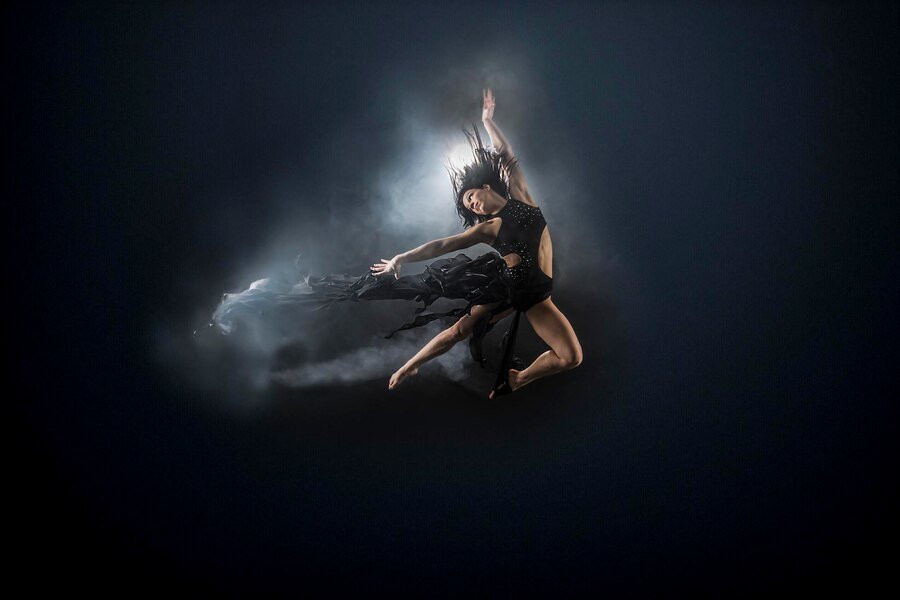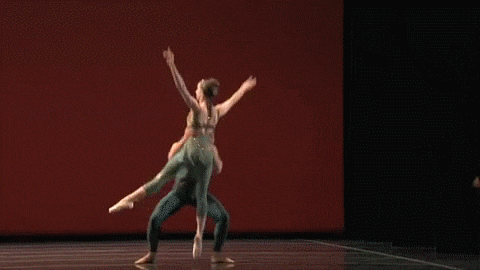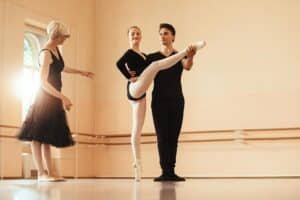
contemporary dance
Contemporary dance, a genre known for its fluidity and diversity, is both an art form and a reflection of the changing dynamics of the modern world. Evolving out of modern and postmodern dance in the 20th century, it has since become a powerful tool for artistic expression, capable of conveying complex human emotions, societal issues, and innovative movement techniques. Today, contemporary dance continues to push boundaries, offering a voice to the unheard and a canvas for experimentation.
Key Takeaways:
- Contemporary Dance as Evolution: Contemporary dance evolved as a response to the limitations of classical ballet, focusing on freedom, expression, and innovation. It reflects the growing desire for personal and collective voices to be heard in the world of art.
- Fluid and Experimental Movement: The genre encourages the use of unconventional movements, often blending styles from ballet, modern dance, street dance, and other disciplines, leading to the creation of new hybrid forms.
- Cultural and Political Commentary: Contemporary dance plays an essential role in reflecting global issues, from identity and migration to climate change and social justice. It serves as a platform for social commentary and activism.
- The Integration of Technology: With the advent of digital tools, contemporary dance now incorporates multimedia, digital projections, and interactive elements that engage audiences in innovative and immersive ways.
- Global Impact: Through platforms like social media and popular TV shows, contemporary dance has reached a global audience, gaining recognition not only as an art form but also as a significant cultural force.
- The Emotional Language of the Body: Dance transcends words by using the human body as a vessel for expressing emotions and narratives, connecting deeply with audiences on a personal level.
The Origins of Contemporary Dance: A New Approach to Movement
Also Read : Ballet Dance: History, Techniques, And Styles Explained
To understand contemporary dance in its full scope, it is important to first trace its roots. Modern dance emerged in the early 20th century as a rebellion against the rigid structures of classical ballet. Pioneers like Martha Graham, Merce Cunningham, and Doris Humphrey emphasized individual expression, improvisation, and the use of the body as an instrument of storytelling. They rejected the traditional aesthetics of ballet in favor of raw emotion and organic movement, which laid the groundwork for contemporary dance.
Also Read : How To Calculate Net Profit and Why It Matters For Your Business
However, it wasn’t until the mid-20th century, when postmodern dance emerged, that the true fluidity and openness of contemporary dance as we know it today began to take shape. Figures like Yvonne Rainer, Trisha Brown, and Steve Paxton sought to expand movement vocabulary by integrating everyday gestures and exploring new choreographic techniques, breaking down barriers between what was considered “high art” and “popular culture.”
Contemporary dance was therefore born out of a desire to transcend boundaries—whether those boundaries were artistic, societal, or cultural.
The Language of the Body: Expression Beyond Words
Also Read : Mastering Salsa Dance: A Beginners Guide To Getting Started
What sets contemporary dance apart from other dance genres is its emphasis on personal and emotional expression. Dancers often engage with their own experiences, struggles, and identities to craft performances that speak directly to the audience. The body becomes not just a vessel of movement, but also a conduit of feeling and narrative.
Unlike classical ballet, where form and structure are paramount, contemporary dance allows for greater freedom and experimentation. Movements can be fragmented, angular, or flowing, reflecting the unpredictability of human emotions and experiences. Dancers may use gestures, facial expressions, and even silence to create an intimate connection with the audience. The rawness and vulnerability of the human body make contemporary dance a deeply personal experience for both the performer and the viewer.
Also Read : The Best Couple Dance Styles For Every Personality And Occasion
This emphasis on the body as a medium for storytelling also aligns with a broader cultural shift in the modern world. As society becomes increasingly globalized and interconnected, there is an increasing desire for art to be accessible and relevant to contemporary issues. Contemporary dance, with its wide-ranging styles and approaches, serves as an inclusive space for a diverse array of stories, voices, and experiences.
Also Read : Top 10 Websites For Online Dance Lessons You Need To Try
The Fusion of Styles: Breaking Boundaries and Building New Forms
One of the most distinctive features of contemporary dance is its eclecticism. Unlike classical ballet, which is governed by a set of standardized techniques and forms, contemporary dance is a melting pot of influences from multiple genres and disciplines. Dancers and choreographers draw inspiration from a variety of sources, including modern and postmodern dance, ballet, jazz, hip-hop, street dance, and even theatrical performance.
This blending of styles and techniques has given birth to new hybrid forms of movement. For example, contemporary dance often integrates elements of martial arts, yoga, and even contact improvisation—a style in which dancers rely on touch and physical contact to create spontaneous movement. These hybrid forms not only offer fresh ways to express ideas and emotions but also challenge traditional notions of what dance “should” be.
Choreographers such as Pina Bausch, Ohad Naharin, and Akram Khan have pioneered innovative movements that combine narrative storytelling with intricate, unconventional choreography. Their work often incorporates elements of theater, visual art, and multimedia, creating immersive experiences that defy the traditional boundaries of dance performance.
The Role of Technology in Contemporary Dance
In the 21st century, the integration of technology into contemporary dance has added another layer of complexity and innovation. Digital projections, video art, and motion capture technology are now frequently used to enhance live performances, creating an interactive experience that blurs the line between reality and virtual worlds. Choreographers and dancers are experimenting with how digital tools can alter the perception of space, time, and movement.
For instance, some performances feature interactive projections that respond to the dancers’ movements in real time, creating a dynamic visual narrative that evolves throughout the performance. Other artists use motion capture technology to record a dancer’s movements and then manipulate them digitally to create new forms of choreography.
This relationship between dance and technology is not just about creating visually captivating performances; it also reflects a deeper cultural shift towards digital media and the increasingly immersive nature of modern entertainment. Contemporary dance is now more accessible than ever, with performances streamed online and dancers collaborating across continents using digital tools.
Contemporary Dance in the Global Context: Cultural Relevance and Political Expression

Contemporary dance has proven to be a powerful tool for social and political expression. In an increasingly polarized world, many choreographers are using dance as a means to engage with pressing global issues such as climate change, identity politics, migration, and inequality.
For example, the dance collective L-E-V—led by Israeli choreographer Sharon Eyal—uses movement to explore themes of identity, belonging, and the body’s relationship to societal expectations. Similarly, works like Blak Dance by Australian choreographer Vicki Van Hout draw on Indigenous Australian cultural practices to explore race, history, and the politics of land.
Contemporary dance allows artists to reflect upon and critique the world around them in a way that resonates deeply with audiences. The fluidity and universality of dance language—unrestricted by verbal or linguistic barriers—make it a unique platform for addressing topics that are both timely and global.
The Impact of Contemporary Dance on Popular Culture
In recent years, contemporary dance has made a significant impact on popular culture. TV shows like So You Think You Can Dance and America’s Best Dance Crew have brought contemporary and street dance styles into mainstream entertainment, influencing millions of viewers around the world. The rise of viral dance challenges on platforms like TikTok has further democratized dance, with people of all ages and skill levels experimenting with movement and choreography.
This visibility in popular culture has led to greater recognition of contemporary dance as an art form. Dance companies are attracting larger, more diverse audiences, and choreographers are finding new ways to bridge the gap between high art and commercial entertainment.
Moreover, social media has given dancers and choreographers a global platform to share their work. Platforms like Instagram, YouTube, and Vimeo allow contemporary dancers to reach an international audience, fostering collaboration, inspiration, and a broader exchange of ideas across cultural boundaries.
Also Read : Mastering Salsa Dance: A Beginners Guide To Getting Started
Conclusion
Contemporary dance, as an art form, is an ever-evolving mirror of our modern world. It captures the complexity, fluidity, and diversity of human experience in a way that no other medium can. The genre’s adaptability allows it to stay relevant in an ever-changing cultural landscape, giving voice to the individual and collective struggles of our time.
As contemporary dance continues to evolve, it remains a vital part of the conversation surrounding art, identity, and culture. It challenges us to reconsider the relationship between body and mind, movement and meaning, and performance and audience. Whether it is used to explore the intricacies of the human condition, express societal commentary, or simply provoke thought, contemporary dance remains a powerful medium for artistic expression and cultural reflection.



